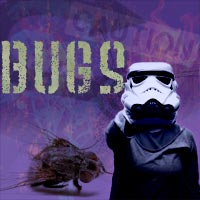|
HEALTH Travel health risks in AsiaMuddy off-road adventure and the spicy culinary delights of Asia are always beckoning. But do watch for bugs and parasites and ever-lurking bird flu. Travel health advice, vaccinations and travel medicine. by Libby Peacock graphics by Winnie Choi and with updates by staff reporters SEE ALSO Asia medical tourism | Bali volcano - is it safe to travel? | Asian tsunami updates | Covid-19 responses | Covid-19 and the return of travel 
Masked lady waits for train. Various kinds of face masks have become de rigueur for travellers and commuters even though their efficacy is limited for airborne agents FIRST SARS THEN THE CHICKENS. Then sushi. Ebola... The Covid-19 novel coronavirus... Seasonal influenza. The list goes on from the innocuous to the insane. The Wuhan Coronavirus (now officially Covid-19, or 2019-nCoV) that emerged surreptitiously in December 2019 had acquired a rapidly expanding global profile by end March 2020, reaching all continents except for Antarctica (in the summer of 2025 it was still rife in Hong Kong, Singapore, Australia, USA, China, India and elsewhere but with milder sympoms due to vaccinations). The lockdowns during the initial outbreak response have not been repeated.
Masks (even if fully sealed) are not a fail-safe protection for airborne viruses but they can help to a small extent. In Asia, Bird flu (the H5N1 avian influenza virus subtype and related less deadly strains like H7N2 and H7N7strains) has not quite acquired the ability to transmit its deadly load from person to person though rare human infections have been reported since 1997 in China, Hong Kong, Vietnam, Indonesia, Thailand, Cambodia, and even New York and Virginia (USA), Netherlands and Canada. Late January 2020 another bird-flu outbreak (for poultry) was reported in Hunan province that borders Hubei (the Wuhan virus source) in the south. Unless you eat undercooked poultry in dubious locations, enjoy a drink of duck’s blood (a common treat in Vietnam) or come in close contact with sick birds, you can assume you’re safe. The same doesn’t necessarily go for those delectable little raw-fish morsels. According to a senior Hong Kong-based infectious diseases expert, sushi accounts for a sizeable percentage of parasitic infections and he advises that you steer clear. Yes, even in Japan. Parasites. An unpleasant reality, along with mosquito, food and water-borne diseases, bacterial nasties, fungal infections and – that bane of every tourist’s life – travellers’ diarrhoea. On then to some travel health advice for Asia and some do-it-yourself travel medicine suggestions. Send us your Feedback / Letter to the Editor But before you start panicking about the coronavirus in China, malaria in Indonesia, dengue in India, or bird flu in Thailand or Vietnam, let’s just put it all in perspective. “I think the biggest risk to travellers in Asia are not any infectious or tropical diseases,” says Dr John Simon, a specialist in infectious and tropical diseases. He also once chaired the Hong Kong government’s Scientific Committee on Vector-borne Diseases. Half the visitor deaths in Asia are the result of road accidents. Thirty percent of the deaths are due to heart attacks. Diseases play a role in only five percent of visitor deaths. The Asia-Pacific region accounts for about 60 percent of global road deaths, despite having only about 16 percent of the world's vehicles and, according to the World Health Organisation, by far the most road injuries in countries such as Cambodia, Vietnam and Malaysia are among motorcycle riders. If you have heart problems, get thoroughly checked out before you leave and make sure you have all relevant medication (and prescriptions) with you. Travel is stressful, which can lead to an increased chance of heart attack if you already suffer from cardiac problems. A research study published in the Occupational and Environmental Medicine Journal showed more than a third of a group of international business travellers suffered high to very high levels of travel stress because of “social and emotional concerns” (such as impact of their travel on family and a sense of isolation). Other factors contributing to the stress included health concerns and workload upon return from travel. {The biggest risk for travellers in Asia is not bugs, parasites, and other nasties, but road accidents that take a toll of unwary victims Make sure you get adequate health insurance before your trip. Some doctors advise travellers enrol in International SOS (www.internationalsos.com), which can arrange emergency evacuations when necessary, or simply advise on the best hospitals, clinics or medical experts in specific locations. According to infectious disease specialist Dr Lam Mun San, a consultant at Singapore’s Mount Elizabeth Medical Centre and a member of eMenders, a group of more than 50 Singaporean specialists, the main health concerns for business travellers in Asia are jet lag, respiratory diseases and stress-related health problems, while the main travel risks for holidaymakers are respiratory infections, diarrhoea and endemic infections including malaria, dengue, parasites, Hepatitis A and B and bird flu. She says the highest overall risk is in rural Southeast Asia. As for all the other invisible nasties, read on for our travel health advice on geographic issues, symptoms, prevention, travel vaccinations, treatment, and simple travel medicine for the road. Travellers’ diarrhoea and Delhi belly
It can be hard to avoid TD, but improve your chances by avoiding salads, eating only well-cooked food, avoiding ice or ice cream and drinking only bottled water (if possible, have it opened in front of you). Not that sealed bottles of water are always beyond reproach, says Dr Simon, quoting a 10-year-old Indian study that showed that 30 percent of the local bottled water tested at the time had been contaminated. Fizzy drinks are your best friends. The UK National Travel Health Network and Centre warns that the protozoan parasite Giardia, which causes the diarrhoeal illness giardiasis, can be the cause of those wild dashes to the loo in up to 12 percent of travellers. One scientific study has showed it to be more common among visitors to the Indian subcontinent. There’s no vaccination or prophylaxis against the infection, usually from the ingestion of contaminated water. Dr Simon recommends including an antibiotic in your travel medicine kit and taking it at the first sign of diarrhoea. This treatment can shorten the bout by 24 to 48 hours, which can be a significant period of time if you are travelling. Make sure you have oral rehydration tablets with you to replace lost fluids and salts. Anti-diarrhoeal medication can bring relief. Other Asian food and water-borne diseasesTyphoid is a life-threatening bacterial infection that is spread through contaminated food and water. In Asia, it is particularly common in Indonesia and the Philippines. Dr John Simon warns, “I think Jakarta is the risk capital for typhoid, but one can also contract it anywhere on the Indian subcontinent.” Dr Lam warns while it’s not common for travellers to get typhoid, the risk does increase with length of stay in the region (particularly Southeast Asia) and she recommends vaccination. Vaccination gives 70 to 80 percent protection against the disease and there is an oral prophylaxis too which is deemed less effective. Just as with other food and water-borne bacteria, try to avoid them by being sensible in avoiding dodgy food and drink. Typhoid symptoms include headaches, lethargy and stomach discomfort, and sometimes a rash. Bloody diarrhoea can follow. Typhoid can be effectively treated with antiobiotics, but recovery is slow. Cholera is another diarrhoeal disease caused by drinking or eating contaminated water or food. Common sources include raw or half-cooked seafood, raw fruit and vegetables and other foods contaminated during preparation or storage. Fortunately, it is not common for travellers to get cholera, says Dr Lam, unless there are extenuating circumstances such as floods or poor sanitation. The World Health Organisation (WHO) advises that travellers guard against cholera and other food and water-borne diseases by sticking to a simple rule: “Boil it, cook it, peel it, or forget it.” The organisation further warns, “cooked food that has been held at room temperature for several hours and served without being reheated can be an important source of infection”. Although cholera can be deadly if not treated, it is easily treatable. Your most important treatment is life-saving rehydration to replace the water and salts lost through diarrhoea and vomiting. The easiest way to do this is by taking oral rehydration salts. (Always include these in your medical kit.) Then seek medical help. A drip may be necessary. Mosquito-borne diseases in AsiaDengue fever, caused by the day-biting Aedes aegypti mosquito, is the most serious disease prevalent in Southeast Asian countries and the number of cases has been increasing steadily over the past 10 years. The reasons for this not clear, but could include global warming and urbanisation. This type of mosquito breeds primarily in man-made water containers. {When Delhi Belly strikes, avoid uncooked salads, and make fizzy drinks and bottled water your best friends and at all times avoid ice According to Dr Lam, who was previously head of the Travellers’ Health and Vaccination Centre at Singapore’s Tan Tock Seng Hospital, the dengue risk for leisure travellers to Asia is “moderately high” and the disease is “highly endemic in Southeast Asia”. Generally, dengue symptoms include flu-like manifestations, high fever, headaches and a skin rash. It can also lead to one or two months of debilitating fatigue. While most cases are fairly mild and people normally get over it by themselves, the less common, severe forms, dengue haemorrhagic fever (also DHF), and “dengue shock syndrome”, caused by a fall in blood pressure, are more serious and can sometimes lead to death. According to the Centres for Disease Control and Prevention, dengue infections produce “a spectrum of clinical illness”, ranging from “a non-specific viral syndrome” to “severe and fatal haemorrhagic disease”. There is no treatment for dengue, except to take painkillers and drink plenty of fluids. (In serious cases, hospitalisation and a drip may be necessary.) There is also no vaccine. Dengue is endemic in Vietnam, Cambodia, Thailand, the Philippines, Indonesia, India, Thailand, Bangladesh and Singapore. There is a very small risk in southern China in the summer months. The authoritative US Centers for Disease Control and Prevention (CDC) warns that sudden outbreaks of dengue fever may occur in Bangladesh, India, Pakistan and Sri Lanka, and that the haemorrhagic form has been reported in eastern India and Sri Lanka. According to the World Health Organisation, a staggering 2,500 million people (two fifths of the world’s population) are now at risk from dengue. The CDC adds that, in 2005, dengue was “the most important mosquito-borne viral disease affecting humans”, with global distribution similar to that of malaria. There are four distinct but related viruses that cause dengue. If you recover from one, you have life-long immunity against that serotype, but only partial and passing protection against subsequent infections by the other three. It also seems that subsequent infections increase the risk of more serious disease. According to Dr David Goldberg, a Yale-educated infectious diseases expert, evidence shows that children under 15 experiencing a second dengue infection are at greatest risk for severe disease, implying that adult travellers who had never been exposed were unlikely to develop complications (www.mdtravelhealth.com). Your best protection against dengue is to try to avoid being bitten by mosquitoes during the day, using insect repellents containing Deet, wearing long sleeves and trousers, shoes (instead of sandals) and a hat. 
Malaria, spread by the night-biting female Anopheles mosquito, is another serious illness that is mainly found in India, Indonesia (but not on the coast of Bali) and Indochina. Some parts of China, North Korea and South Korea may also pose a malaria risk, but there is little or no risk in Japan, Taiwan, Hong Kong, Macau, Mongolia, Singapore, Brunei or the Maldives. There is no risk of malaria in most of Asia’s seaside resorts including popular Thailand resort towns. In China, malaria is present in the rural parts of some provinces, but there is no risk in cities and popular tourist areas (including Yangtze River cruises). In South Korea the only risk is at the Demilitarised Zone and some rural areas. In South Asia, the whole of India suffers bouts of malaria, including Delhi and Mumbai. The same goes for Bangladesh and all parts of Pakistan below 2,000m. Sri Lanka has potential malaria in all areas with far lower risk in Colombo, Galle, Kalutara and Nuwara Eliya. In Nepal, there is little or no risk in Kathmandu or on Himalayan treks, while Bhutan has risk only along its southern belt. In Southeast Asia, there is little malaria risk in Philippine cities or urban and coastal areas of Malaysia (but there may be in rural areas). There’s some risk in Thai areas bordering Cambodia, Laos and Myanmar. In Myanmar, there’s a risk in rural areas, but less so in Yangon and Mandalay. Malaria is present everywhere in Cambodia, including at the Angkor Wat temple complex, but less so in Phnom Penh. Vietnam’s rural areas pose a risk, but there’s less worry in Hanoi, Ho Chi Minh City, Da Nang, Nha Trang, Qui Nhon and Haiphong. All of Laos, except for Vientiane, has malaria. So does the whole of East Timor. In Indonesia there’s a risk in Irian Jaya, at the Borobudur temple complex, in Aceh and in the rural areas of the other islands. There is less risk in cities on Java and Sumatra or in the resort areas of Java and Bali. Business travellers don’t contract malaria easily, says Dr John Simon. Although all cities in the Indian subcontinent have it, business travellers are likely to stick to business districts and five-star hotels where there would be little or no malaria and they would be unlikely to be exposed (malaria is far more prevalent on the outskirts of cities). For this reason, business travellers normally don’t need malaria prophylaxis. However, holiday travellers should take appropriate anti-malarials. Dr Simon believes Malarone to be the safest antimalarial drug for use in Asia, although it is also the most expensive. Doxycycline, an antibiotic that kills the parasites in blood that cause malaria, is the least expensive but may have side effects (including stomach upsets and yeast infections). Always consult a travel clinic or doctor a month or six weeks before you travel, to make sure you are prescribed the best drug for your particular circumstances. {According to the WHO, a staggering two-fifths of the world's population is currently at risk from dengue and outbreaks are common during the monsoons Try to avoid being bitten at night by wearing long sleeves and trousers, sticking to light-coloured clothing (mosquitoes are more attracted to dark colours), avoiding perfumes and aftershaves and using repellents and mosquito nets. If you’ve been to a malaria area in the past three months, and you get a fever and the cause is not obvious, tell your doctor you’ve been to malaria area. Japanese encephalitis (JE) is a serious viral disease that causes more disability among Asia’s children than any other. Spread mainly by rice-field-breeding mosquitoes, the disease, which leads to inflammation of tissue in the brain, kills 20 percent of people who get it, and 80 percent of those who don’t die will be disabled in some way after recovering, states Dr Simon. However, it is an “uncommon infection among travellers,” according to Dr Lam. Mosquitoes become infected by feeding on pigs and wild birds infected with the Japanese encephalitis virus, and people get infected when they are bitten by mosquitoes carrying the virus. The JE virus, which invades parts of the central nervous system including the brain and spinal cord, cannot be transmitted from person to person. Initial symptoms are flu-like – high fever, tiredness, headache, nausea and vomiting. According to the CDC, Japanese encephalitis occurs widely in South Asia, except in mountainous areas. There are cases on the outskirts of Beijing every summer. Travellers in rural areas are most at risk as the mosquitoes that spread JE commonly live in rice fields and other pools of water. Since JE is caused by a virus, antibiotics are not much help and there are no countering antivirals, but there is an effective vaccine. If you plan to spend more than a month in Asia or make Asia your home, particularly if you are going to be spending time in rural areas, consider being vaccinated, advise Dr Simon and Dr Lam. Bacteria, bugs and bad airMeningococcal meningitis, which is not particular to Asia, is a life-threatening infection of the fluid and tissues surrounding the brain. Several different bacteria can cause meningitis. The bacteria are transmitted through droplets, from people coughing or sneezing on you. It can also be transferred through sharing eating utensils and in big crowds. An effective vaccine that has to be repeated every three years does exist, but, fortunately, it is rare for travellers to Asia to contract the disease and Dr Lam says vaccination is “not routine”. Dr Simon notes that there was a large outbreak in Delhi in 2006, and that it is endemic in the Kathmandu valley and certain parts of Vietnam. Symptoms include a stiff neck, high fever, sensitivity to light, confusion, headaches and vomiting. Although a range of antibiotics can be used to treat it, meningitis is a medical emergency requiring immediate attention. Tuberculosis (TB), a bacterial infection mainly affecting the lungs, is spread by people with the disease who cough or sneeze the bacteria into the air. However, says Dr Simon, TB is generally hard to get if you are well nourished and not immuno-compromised. The biggest risk lies in spending time in areas where TB is endemic, with lots of exposure to the local population. Symptoms include a feeling of weakness, weight loss, fever, and night sweats, as well as coughing and chest pain. TB is treatable, but there’s a fair amount of drug resistance. Leptospirosis, according to the independent Leptospirosis Information Center (www.leptospirosis.org), is also known as canicola fever, hemorrhagic jaundice, infectious jaundice, mud fever, spirochetal jaundice, swamp fever, swineherd's disease, caver's flu or sewerman’s flu. It is a bacterial infection resulting from exposure to the Leptospira interrogans bacterium. According to the centre, “mild” cases of leptospirosis are “surprisingly common across the globe”. According to the CDC, leptospirosis is often contracted “through recreational water activities such as kayaking in contaminated water” (water containing the urine of infected animals such as rats) and is common in tropical areas of South Asia. Camping, whitewater rafting and other outdoor sports can be risk factors. In 2000, participants in an eco-challenge event including sailing, swimming, kayaking and canoeing in rivers in Sabah, Malaysian Borneo, experienced an outbreak of leptospirosis. Symptoms include fever, headaches, muscle pain, vomiting, diarrhoea and jaundice. The antibiotic doxycycline, which is also an anti-malarial, can be used to treat it. Then there's air pollution and the annual haze over much of Southeast Asia as Indonesia spontaneously combusts with slash and burn techniques - to cut forest cover - regularly spiral out of control. This has affected urban centres like Singapore, Jakarta and even islands in the southern Philippines and Kalimantan. Watch for metropolises like Beijing and New Delhi where industrial and car-fume pollution often well exceeds WHO safety limits. Common viruses to guard against in Asia
Hepatitis. Most doctors routinely recommend vaccinations against Hepatitis A and B. Hepatitis A is a viral liver infection, which is easily contracted through infected food or water. According to infectious diseases expert Dr David Goldberg (www.mdtravelhealth.com), Hepatitis A is “the most common travel-related infection after travellers’ diarrhoea”. The symptoms include fever, nausea, stomach pain, jaundice, vomiting and fever. While the illness is not life threatening and usually clears up by itself, Dr Simon warns that there is a four percent fatality rate by the age of 50, so it should not be treated too lightly. Hepatitis B, another viral infection of the liver, is nine times easier to contract sexually than HIV – and up to 10 percent of Asians are carriers (who don’t show symptoms). Hepatitis can also be spread though shared needles for tattoos, body piercing or injections. Unless you are going to engage in risky sexual behaviour or anticipate having dental work done or having transfusions or injections, your risk of contracting Hepatitis B is low, but vaccination is safe and effective. Symptoms include fever, jaundice, nausea, vomiting and stomach pain, and a small number of cases lead to chronic liver damage. Hepatitis C (for which there is no vaccine) is a serious viral infection that can cause chronic liver damage, but the risk is low for travellers in Asia. It is contracted through blood, infected shared needles and sexual contact. The highest Hepatitis C risk in Asia is in Pakistan, where there is a five percent carriage rate. Like Hepatitis A, Hepatitis E – another viral liver infection – is spread though contaminated food and water. There is no vaccine and no treatment for it. Hepatitis E infection usually clears up by itself without complications, but it is dangerous for pregnant women who are at high risk of developing potentially deadly acute liver failure. Bird flu risk in Asia – stay alertAvian influenza or “bird flu” is a highly contagious disease afflicting birds, caused by influenza A viruses. The main bird flu virus that is currently affecting poultry is the H5N1 strain of the virus. This subtype currently also poses the greatest concern for human health. {To eliminate risk of bird flu, cook chicken and eggs well, and stay away from exotic duck blood delicacies - but then you'll miss a lot of exotic cuisine In February 2020 a bird flu outbreak among chickens was reported in Hunan province, China, that borders Hubei to the south. Countries that have had known cases of H5N1 in birds include Bulgaria, Cambodia, China (including Tibet and Hong Kong), England (Suffolk), Hungary, Indonesia, Japan, Nigeria, Laos, Pakistan, Russia, Sudan, Thailand and Vietnam. By mid-February 2007, an estimated 274 people in 11 countries, including Cambodia, China, Indonesia, Thailand and Vietnam in Asia, had contracted bird flu and 167 had died. Indonesia has been hardest struck, with 63 deaths out of 81 cases. According to the UK Department of Health, “there is no firm evidence that H5N1 has acquired the ability to pass easily from person to person. However, concern remains that the virus might develop this ability, or that it might mix with human flu viruses to create a new virus. It is this ability of avian influenza, to change and to mix, that has given rise to the fear of a new human flu pandemic.” So what causes avian influenza? According to Peter Cordingley of the WHO in the Western Pacific region, “Infections of humans with avian influenza have been limited to contact with sick poultry or contaminated environments, such as duck ponds. Travellers should stay away from high-risk areas. Eating infected chicken is not thought to be a danger if the chicken is well cooked, with no blood on the bone. Similarly, eggs should be well cooked.” Wash your hands often and use alcohol hand wipes when you don’t have access to soap and water. Don’t eat undercooked or raw poultry, eggs or anything containing raw poultry blood. Should you get ill with a fever, cough, difficulty breathing, headache, sore throat or muscle ache, see the doctor immediately. Says Dr John Simon, “The current situation is that you have no chance of getting it if you don’t have contact with birds and don’t drink duck blood (a practice followed in Vietnam), or eat undercooked poultry.” Dr Lam agrees “the risk is very low for leisure travellers”. She advises that travellers avoid direct contact with birds and fowl, eat only cooked chicken and avoid partially cooked meats. Regarding keeping your own stock of Tamiflu on standby, she says, “Why not, if it is available?” The symptoms of bird flu in humans include a fever (temperature of 38C or more), cough, shortness of breath, headache, sore throat, sore eyes and muscle aches. Travellers who develop these symptoms and have been in close contact with live or dead poultry should seek medical advice. Many governments worldwide have been stockpiling the antiviral drug oseltamivir (Tamiflu), considered the drug most likely to help reduce infections in a pandemic. Some governments discourage people from stockpiling the drug and the European Centre for Disease Prevention and Control has said it is “not recommended” that travellers take Tamiflu with them. But some infectious diseases experts recommend that people do get their own stock of Tamiflu – just in case. (Get it legally, with a doctors’ prescription.) According to Cordingley, the WHO "does not recommend that members of the public take Tamiflu without the advice of a doctor" and "used inappropriately, it can have adverse effects". Why you must take rabies seriouslyThe viral disease rabies is present throughout the world, but most deaths occur in Asia and Africa. Rural areas carry the biggest risk, and in Asia rabies is endemic (but not limited to) China, Bangladesh, India, Indonesia, Myanmar, Nepal, Pakistan, the Philippines, Sri Lanka, Thailand and Vietnam. It is usually transmitted through an animal bite (often dogs). It’s a very serious disease and can be fatal, but there is a vaccination available, which must be given before exposure or directly after exposure (before symptoms start). The UK Department of Health advises: “Don’t touch any animals, even if they seem to be tame. If you do get bitten, wash the wound immediately, using soap or detergent if you can. Apply alcohol if possible. Go to the nearest doctor or hospital. If you need a rabies vaccination, they will need to give it to you straight away. Ask for ‘human diploid cell vaccine’, if possible.” Parasites and fungal infectionsThere’s a range of parasites in Asia just waiting to get under your skin. Back to that sushi: undercooked and raw fish and shellfish are major culprits when it comes to spreading parasitic infections. Be very careful when you order seafood. Worms are “endemic in most areas” in Asia, says Dr Lam, who advises that travellers use “common sense” and “take food and water hygiene precautions”. {According to Abraham, only Canada has an influenza pandemic preparedness plan for the entire population though awareness is growing In parts of Asia, including India (and elsewhere in the world), there’s a risk of contracting the schistosomiasis (Bilharzia) parasite from swimming in pools, lakes and rivers. You get schistosomiasis through the skin from fresh water contaminated with urine or faeces from an infected person. According to TravelHealth.co.uk, travellers “might experience an itching or rash a few hours after contact where the larvae enter the body” and may “remain symptom free until the eggs hatch weeks later, when a fever sometimes occurs”. Find out if the water is safe before you take the plunge and avoid drinking contaminated water. The UK National Travel Health Network and Centre states that, in Asia, Bilharzia is most prevalent in southern China and the Philippines. There is no vaccine against it, and if you’ve been exposed, consult a tropical medicine specialist for screening tests. Authorities such as the CDC advise against swimming in fresh water (except in well-chlorinated swimming pools) in parts of Cambodia, Indonesia, Laos, Philippines and Thailand to avoid infection. Don’t get hooked on wormsThink twice before walking barefoot or lying on the beach without a towel, cautions Dr Simon. Hookworm larvae, spread by cat and dog faeces, can penetrate your unbroken skin. Symptoms include an itchy rash. See the doctor – it’s treatable. That’s the long and short of health risks while travelling in Asia. Pack your pills – and common sense – and set out. Severe Acute Respiratory Syndrome, SARSThe WHO’s Peter Cordingley adds that SARS (Severe Acute respiratory Syndrome), the respiratory syndrome caused by the SARS coronavirus that affected over 8,000 people in 30 countries around the world (but concentrated in six) in 2003, “has returned to the animal world and is thought to have its reservoir in Chinese horseshoe bats." It is not known whether it will return, but improvements in surveillance and knowledge since the 2003 outbreak make it unlikely it will have the same impact as it did then. In his excellent book, Twenty-First Century Plague – The Story of SARS, Hongkong-based journalist Thomas Abraham concludes, “The real danger is not the return of SARS. It is the eruption of the next disease caused by a new virus.” SARS was a global wake-up call that has unfortunately fallen on deaf ears. According to Abraham, “Even among the wealthy nations, only Canada has an influenza pandemic preparedness plan that ensures vaccination for the entire population.” Travel safe, travel smart, but do travel.
NOTE: Telephone and fax numbers, e-mails, website addresses, rates and other details may change or get dated. Please check with your dealer/agent/service-provider or directly with the parties concerned. SmartTravel Asia accepts no responsibility for any inadvertent inaccuracies in this article. Links to websites are provided for the viewer's convenience. SmartTravel Asia accepts no responsibility for content on linked websites or any viruses or malicious programs that may reside therein. Linked website content is neither vetted nor endorsed by SmartTravelAsia. Please read our Terms & Conditions. |



 Health officials worldwide have been taking stock of new Covid strains and mutations since. This zoonotic virus (it has emerged from other species, most likely bats and snakes) has been classed as somewhere between Sars and Bird Flu in its intensity, yet by late January 2020 it had eclipsed Sars in terms of total infections (though with a lower fatality rate). And it once again brought to the fore the risk of infection for travellers who in turn become unwitting carriers and transmitters in an increasingly global borderless world.
Health officials worldwide have been taking stock of new Covid strains and mutations since. This zoonotic virus (it has emerged from other species, most likely bats and snakes) has been classed as somewhere between Sars and Bird Flu in its intensity, yet by late January 2020 it had eclipsed Sars in terms of total infections (though with a lower fatality rate). And it once again brought to the fore the risk of infection for travellers who in turn become unwitting carriers and transmitters in an increasingly global borderless world.  The name says it all. This unpleasant condition, caused by bacteria in about 85 percent of cases (viruses and parasites account for about five and 10 percent of cases respectively), leads to stomach cramps, nausea, diarrhoea, bloating, vomiting, fever and malaise. According to the UK National Travel Health Network and Centre, travellers’ diarrhoea (TD) is the most common illness contracted abroad, affecting 20 to 60 percent of overseas travellers.
The name says it all. This unpleasant condition, caused by bacteria in about 85 percent of cases (viruses and parasites account for about five and 10 percent of cases respectively), leads to stomach cramps, nausea, diarrhoea, bloating, vomiting, fever and malaise. According to the UK National Travel Health Network and Centre, travellers’ diarrhoea (TD) is the most common illness contracted abroad, affecting 20 to 60 percent of overseas travellers.